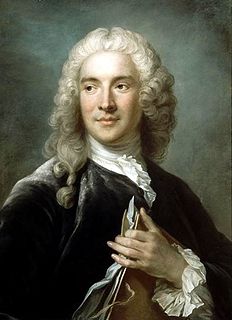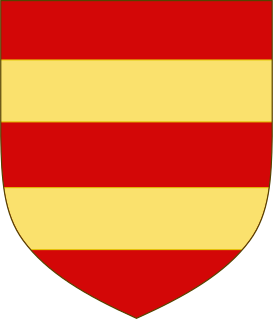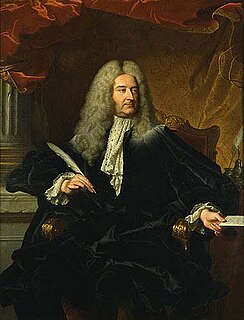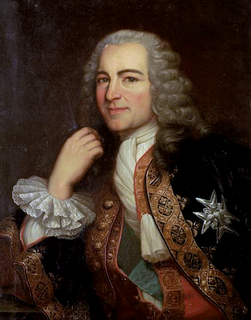
Auguste-Charles-Joseph de Flahaut de La Billarderie, comte de Flahaut was a French general during the Napoleonic Wars, a statesman, and late in life French ambassador to the Court of St James's.

Louis Philippe, comte de Ségur was a French diplomat and historian.

François-Joachim de Pierre de Bernis, comte de Lyonnais was a French cardinal and diplomat. He was the sixth member elected to occupy Seat 3 of the Académie française in 1744. Bernis was one of the most prominent figures in the autobiography of Giacomo Casanova Histoire de ma vie starting from the chapter on "Convent Affairs".

Abel Servien, marquis de Sablé et de Boisdauphin and comte de La Roche des Aubiers was a French diplomat who served Cardinal Mazarin and signed for the French the Treaty of Westphalia. He was an early member of the noblesse de robe in the service of the French state.

The title of Duke of Noailles was a French peerage created in 1663 for Anne de Noailles, Count of Ayen.

René-Louis de Voyer de Paulmy, Marquis d'Argenson was a politician and friend of Voltaire, who served as Minister for Foreign Affairs from November 1744 to January 1747. His younger brother, Marc-Pierre, Comte d'Argenson (1696-1764), was Minister of War from 1743 to 1757.

Charles Colbert, marquis de Croissy was a French statesman and diplomat.

Anne-César de La Luzerne was an 18th-century French soldier and diplomat who had an influential role to the Continental Congress and new government of the United States of America after it gained independence from Great Britain. Descended from an illustrious Normandy family, as a Knight of Malta and the Order of Saint Louis he was styled Chevalier before King Louis XVI created him a Marquis in 1785.

Charles-Joseph Natoire was a French painter in the Rococo manner, a pupil of François Lemoyne and director of the French Academy in Rome, 1751–1775. Considered during his lifetime the equal of François Boucher, he played a prominent role in the artistic life of France.

Adrien-Louis de Bonnières, comtelaterduc de Guînes was an aristocrat of the Ancien Régime, who served as a French Army general and diplomat; he was also a favourite of Queen Marie-Antoinette.

Jean De Beaumanoir, seigneur and afterwards marquis de Lavardin, count of Nègrepelisse by marriage, was a French marshal.

The House of Harcourt is a Norman family, and named after its seigneurie of Harcourt in Normandy. Its mottos were "Gesta verbis praeveniant", "Gesta verbis praevenient", and "Le bon temps viendra ... de France".

Marie-Charles-César de Faÿ, comte de la Tour-Maubourg was a French soldier and politician during the French Revolution and the First French Empire. His father was Claude Florimond de Faÿ (1712–1790); his mother was Vacheron Bermont Marie Françoise.

Louis-Marie-Florent de Lomont d'Haraucourt, marquis later duc du Châtelet, was an aristocratic French Army general and diplomat of the Ancien Régime.

Germain Louis Chauvelin, marquis de Grosbois, was a French politician, serving as garde des sceaux and Secretary of State for Foreign Affairs under Louis XV.

Louis Philogène Brulart, Comte de Sillery and Marquis de Puysieux (1702-1770) was a French diplomat and nobleman who served as Foreign Minister from 1747 to 1751 but was forced to retire due to ill-health.

Jean-Antoine de Mesmes, called d'Avaux, (1640–1709) was a French diplomat in the service of Louis XIV. He is probably best known for accompanying King James II of England in his Irish expedition. He also negotiated for France the peace of Nijmegen, which ended the Franco-Dutch War (1672–1678). He was French ambassador in Venice, The Hague, Stockholm, and finally in The Hague again.

















